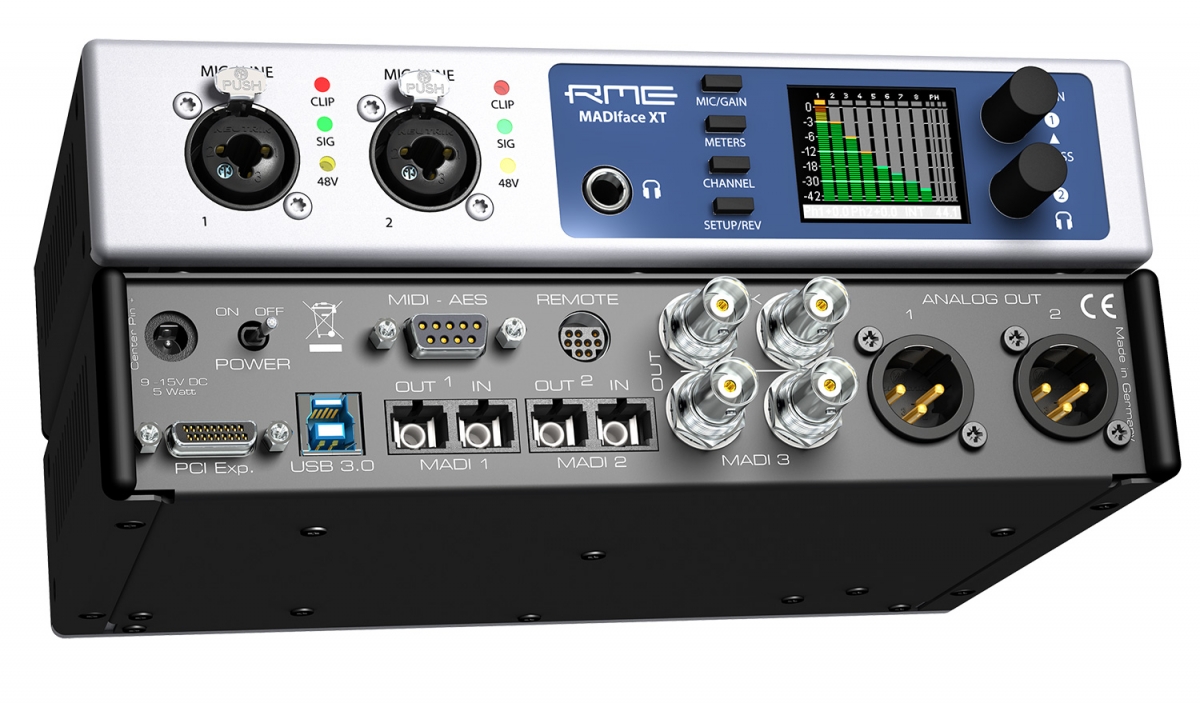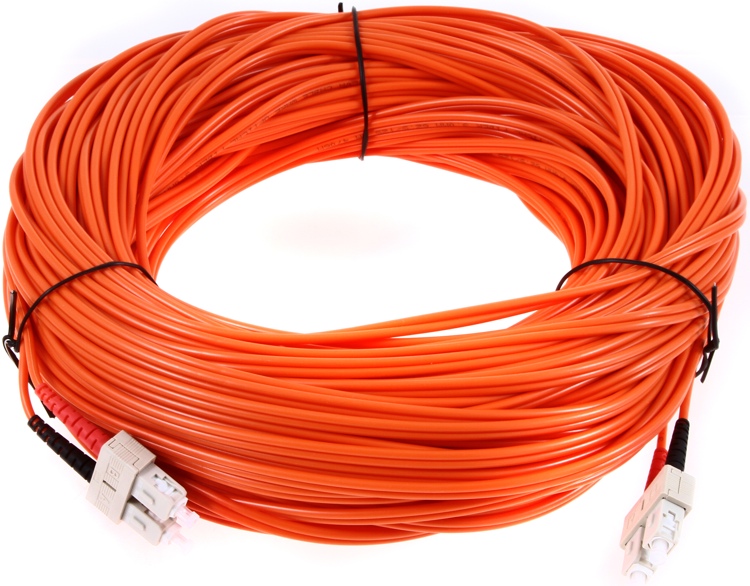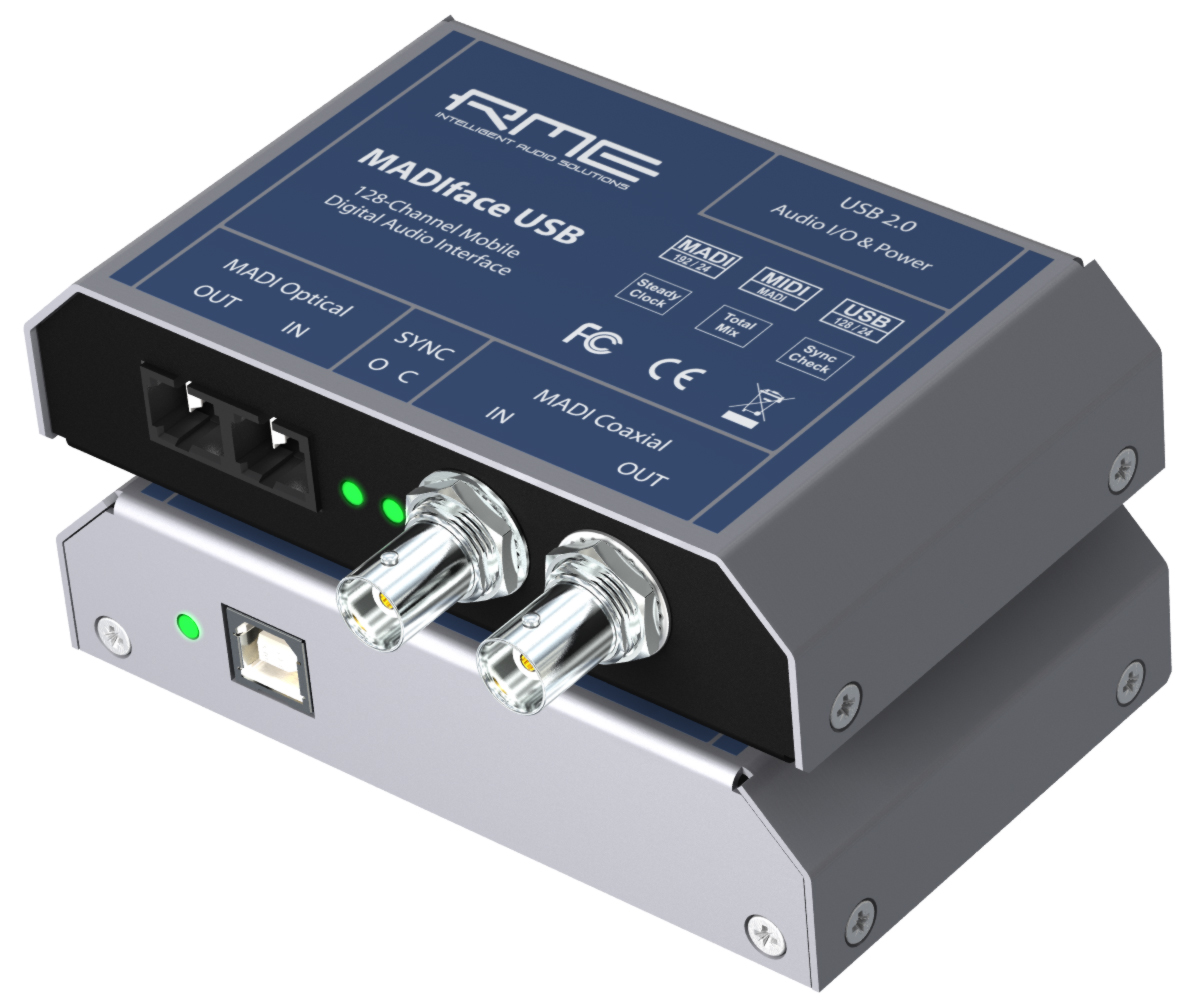In recent years the MADI protocol has established itself as an incredibly robust and powerful tool for recording engineers, musicians and audio professionals. The ability to send a high number of channels via a single, compact cable has already made MADI a popular format for broadcasting. It’s now found its way into studios and live rigs around the world, and has become an industry standard in high-end audio. In this feature, we’re taking a look at what makes MADI such a useful and powerful protocol for anyone faced with the task of transferring large numbers of channels of high-quality audio.
What is MADI?
MADI (Multi-channel Audio Digital Interface) is a data-transfer protocol for digital audio signals that allows up to 64 discrete channels of audio to be carried simultaneously via a single cable, with sample rates of up to 192KHz (click here for a look at the technical specifications of MADI). MADI cables are directional, so there is one connector for MADI in, and another for MADI out. RME provides several options for those looking to integrate MADI into their system, such as the MADIface USB and the MADIface XT, as well as a selection of PCIe MADI cards.
There are two main types of cable available for MADI devices – coaxial, which uses BNC connectors and can be run over distances of up to 100m, and optical, which uses SC type connectors and can be run over huge distances of up to 2km. This makes MADI ideal for situations that require long cable runs, such as outside broadcasting, large recording productions or live shows. There is now even a Cat5 variant of MADI being laid down by the Audio Engineering Society (AES) which has already been incorporated into RME’s MADI Router (more on that product later).
What advantages does MADI have over a traditional multicore cable?
Let’s take the example of a production company at an outside event running multiple channels of audio, with the signals being fed to a truck for recording and mixing, parked in a car park some several hundred metres away. The traditional solution is to use an analogue multicore cable to transfer each channel back to the recording truck. However, due to the nature of multicore cables, there are a few potential problems with this method – problems that are simply not an issue with MADI.
For example, as multicores are made up of many individual analogue cables, interference from nearby power cables can introduce unwanted noise into the audio signal. Also, if one of the cables develops a fault, it can be a very time-consuming process to find the problem cable within the group. As a digital cable, MADI on the other hand can be comfortably laid alongside or across power cables with no alteration to the signal, and doesn’t suffer from the problem of individual channel loss. MADI cables are also much cheaper than multicores due to being a single cable, so if a fault were to occur, the cost of buying a replacement is far less than that of replacing a multicore.
Multicore cables are also physically bulky and can be quite heavy, particularly for long cable runs. The weight can make them difficult to work with, possibly even needing several people to load and unload, especially if multiple runs are used. MADI cables are light and slim by comparison, which makes them much easier to work with, and much faster to deploy.
Using MADI in the studio
MADI can also be extremely useful in recording studios, providing a more simplified and streamlined recording solution. We’ve written previously about the recording setup at Falmouth University, where MADI is being used to transfer channels recorded through an analogue desk into a computer via an RME HDSPe MADI FX card (after the signals have been converted to digital via an RME M-32 AD converter).
Alongside this, the university has also installed a MADIface USB, which provides their students with a simple and convenient way to record straight to their own laptops. Instead of having to export files from the main studio computer at the end of each session, the students can record multiple tracks of audio straight to their own DAW of choice via a USB cable, whilst still making full use of the recording studio and mixing desk!
Using MADI for live
Another situation where MADI really stands out is for gigs and concerts, as it provides a very small and portable solution – crucially important to many touring musicians, who want to minimize the amount of equipment they have to travel around with. We’ve previously written about the role MADI played in Lily Allen’s “Sheezus Tour”, where a MADIface USB was used in conjunction with the MADI-capable Ferrofish A16 Mk-II AD/DA converter to provide more channels for the playback rig.
We’ve also spoken to the team working with the band Disclosure too, who are also taking advantage of the flexibility of MADI as part of their live setup. In Disclosure’s case, not only are they using MADI as a concise way to route their sounds to the venue’s front of house desk, they’re also using MADI to send sounds to each other’s laptops whilst performing!
In both of these situations, the high-channel counts and outstanding stability of RME MADI interfaces make perfect sense for live performances. Click-tracks and cues for the musicians, as well as instrument groups and stems, can all be transferred through a single cable, and the easy routing options provided by RME’s TotalMix FX software results in incredibly flexible and portable solutions.
Other features of MADI
It’s also worth noting that MADI supports the sending of control data messages via ‘MIDI over MADI’. When using the Ferrofish A16 Mk-II or an RME Octamic XTC preamp for example, a user can control the input gains remotely without having to move from their computer.
The Octamic XTC is also the only audio interface available that, when used in Class Compliance mode, allows audio to be recorded via MADI to an iPad. This is limited to 24 channels, however there may be instances when the ability to send audio to an iPad over MADI comes in handy, so it’s a nice additional feature that RME have included on this particular device.
There is also the incredibly flexible RME MADI Router, which provides routing of full MADI streams between the 12 inputs and outputs as well as the ability to create 4 composed MADI streams constituted from its 768 individual input channels. This means that you could combine several incoming MADI streams into a single output for example – very useful when working with multiple MADI streams, and all in just 1U of rack space!
Summary
With its ease of use and flexible routing capabilities, the MADI protocol provides a far simpler, lighter, quicker, cheaper and sturdier method than conventional analogue cabling. The format allows for extremely high channel counts to be transferred at broadcast quality, and can do so over long distances.
RME provide several extremely compact and portable options, so whether you’re looking for a fixed or portable solution, RME can provide you with the perfect MADI setup to suit your needs.
If you’re interested in adding MADI to your setup or would like to arrange a demo of any of the products featured in this article, give us a call on 01727 821 870 to speak to one of our team or send us an email via info@synthax.co.uk.






















